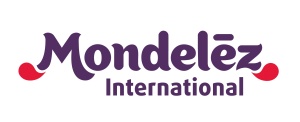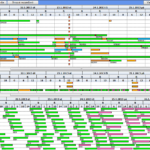The Project implemented a short-term capacity planning of production by means of expansion of the installed production system COMES in the plant of Kraft Foods Valašské Meziříčí – a manufacturer of coffee and coffee blends. Coffee production needs a multi-level planning which deals with final product packaging, storage of ground coffee in degassing silos, storage of roasted coffee beans in maturing silos and roasting of blends of coffee beans. COMES system ensures communication with the whole IT structure of the enterprise and the ERP system.
The plan is built in weekly intervals and is created in the life cycle. The plan can be created manually using the Gantt diagram, or automatically with the help of a planning algorithm on the basis of input conditions, input as classifiers, and in compliance with the rules of the user. The planning algorithm provides the planner with several alternatives of automatically generated plan. The planner can then choose the most suitable variant of the plan and manually correct it, if necessary (plan is in the stage of “Editing”). Subsequently the planner will have the plan checked (validation of the plan), then switches the plan to the stage “Released”, when it is no longer possible for the plan to be altered. The plan data, however, are available to other users. If necessary, the planner can create a new plan, which will replace the current one.
The scheduling algorithm is executed in two steps. In the first step, it computes a capacity plan, so as to meet maximum requirements. At this stage, a modified simplex method is used, in order to consider the overlapping of the devices. In the second step, the algorithm computes combinations that best suit the required optimization criteria. The algorithm makes use of the Breadth-first search method to search through the data structures.
The weightings of individual combinations (browsed paths) are defined by the criterion function the value of which is determined by the sum of the values of optimization conditions, while each optimization condition is counted in with different weighting. The algorithm looks for extreme of the criterion function, which indicates the optimum plan according to specified optimization conditions.
In the calculation the following optimization criteria are considered:
- Achieving maximum amount of planned production
- Minimizing travelling and changes in the lines arrangement
- Even distribution of agency workers
Benefits of Scheduling in COMES
- Scheduling inside the manufacturing execution system COMES offers the user a comfortable plan creation means linked to other implemented functions (data collection, distribution of the plan to individual workplaces, reporting, …)
- Shortening the plan creation time from hours/days to minutes
- Independence from a particular person who is in charge of planning
- Avoiding errors thanks to the plan validation (automatic check)
MES Project
- Short-time capacity scheduling of production (APS)
SW means used
-
- COMES Logon
- COMES Modeller
- MS SQL Server
- Production schedule in Gantt diagram



